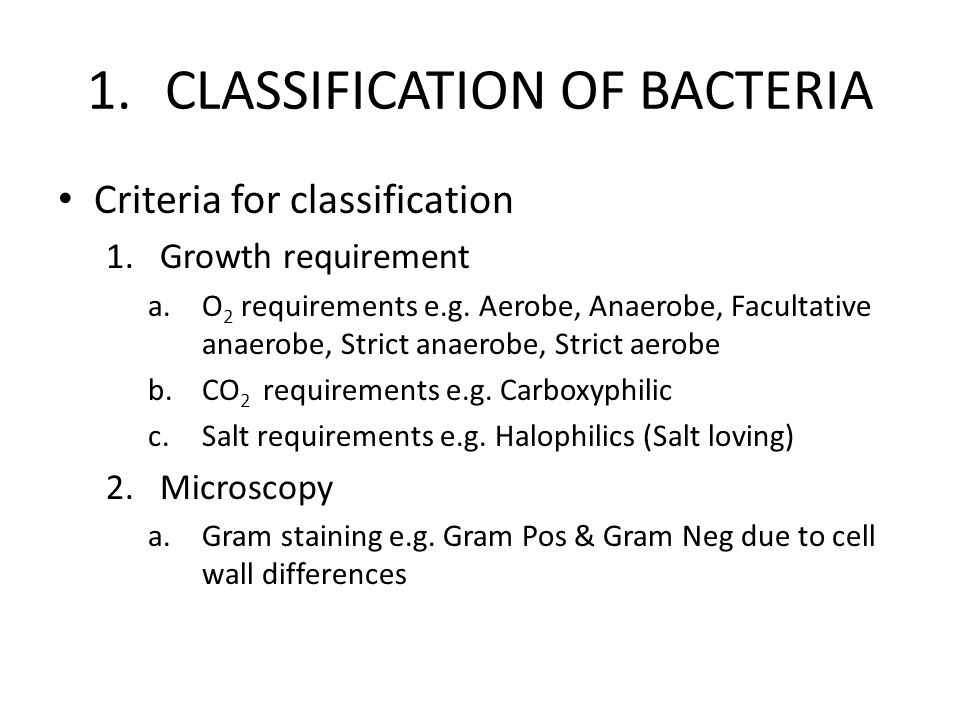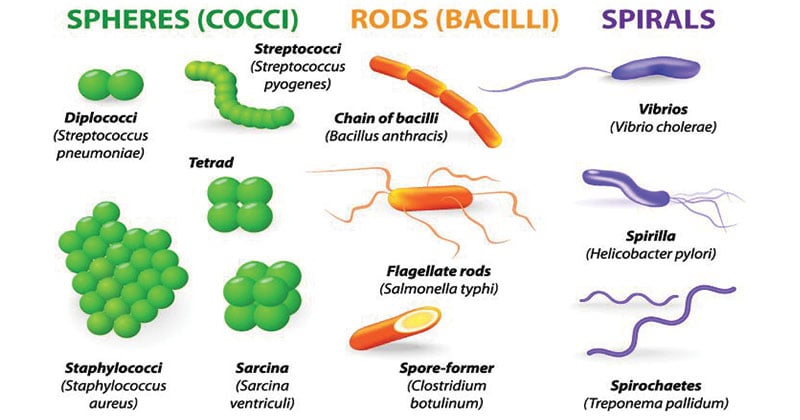5 Criteria Used to Classify Bacteria
TABLE 51 Classification of Medically Important Bacteria. Named after David Baltimore a Nobel Prize-winning biologist these groups.

Methods Of Classifying And Identifying Microorganisms Boundless Microbiology
Gram staining shape presence of a capsule bonding tendency motility respiration growth medium and whether it is intra-.

. Bacteria can be classified based on shape mode of nutrition respiration the composition of the cell wall etc. Cell shape nature of multicell aggregates motility formation of spores and reaction to the Gram stain are. 1 Isolation method 2 Staining Reactions method 3 Biochemical reactions method 4 Indole test method 5 Methyl Red Test m.
Size and shape of cells. Morphology Sizeshape of cells arrangements presence of flagella pili endospores capsules. SAMS-USA PO Box 399 Ambridge PA 15003.
Identify the bacteria by following steps or method the identification of unknown bacteria by. Bacteria can be heterotrophic and autotrophic. View Notes - Criteria for classifying bacteriaTerm.
The heterotrophic bacteria can be parasitic or saprophytic. Atypical Bacteria types Mycoplasma - lack cell wall highly pleomorphic Chlamydia - lack peptidoglycan multiphased life-cycle obligate intracellular parasites. Peritrichous bacteria.
Cocci example-staphylococcus bacilli example- Bacillus anthracis Presence of capsule- Capsulated or non capsulated capsulated example- Streptococcus pneumoniae n. Gram-positive Gram-Negative Acid-Fast Capsule. Many flagella at different points.
Monera includes Eubacteria and Archeobacteria Individuals are single-celled may or may not move have a cell wall have no chloroplasts or other organelles and have no nucleus. Whitaker proposed that organisms should be broadly divided into kingdoms based on certain characters like the structure of the cell mode of nutrition the source of nutrition interrelationship body organization and reproduction. Indeed bacteria are classified on the basis of many characteristics.
Atrichous has no flagella while few have flagella on one side others have on all the sides. Bacteria occur everywhere and they are microscopic in nature. They possess a cell wall and are prokaryotic.
Three of the major characteristics used to classify organisms are cell structure mode of nutrition and cellularity. Based on these criteria bacteria can be classified as bacillus coccus or vibrio etc autotrophic or heterotrophic aerobic or anaerobic Gram or Gram -. Donors can also give by check payable to.
Arrangements in pairs clusters or filaments. Two flagella on both sides of the cell. Antigens and Phage.
A Based on shape- classified into cocci oval or spherical and bacillirod shaped. Limit of resolution 25-20 nm sufficient to see subcellular detail large molecular complexes limit of resolution 02 μm sufficient to see most organelles bacteria resolution ability to distinguish objects close to each other. CRITERIA FOR IDENTIFICATION AND CLASSIFICATION Morphological Characteristics.
The cell wall is formed of amino acids and polysaccharides. Textbook solution for Biological Science 6th Edition 6th Edition Scott Freeman Chapter 26 Problem 12PIAT. 1 Only organisms that are described in this book in the section on medically important bacteria are included.
View the full answer. Amongst these the Five Kingdom Classification proposed by Robert Whittaker stood out and is widely used. Lophotrichous bacteria.
Although genetic divergence highlights the evolutionary relationships of bacteria morphological and biochemical features of bacteria remain important in the identification and classification of those organisms. We have step-by-step solutions for your textbooks written by Bartleby experts. When identifying bacteria in the laboratory the following chatacteristics are used.
2 Because there are so many gram-negative rods they are divided into three categories. It is called a differential stain because it differentiates among bacteria and can be used to distinguish among them based on differences in their cell wall. 5 days ago When identifying bacteria in the laboratory the following characteristics are used.
Both wet-mounted and properly stained bacterial cell suspensions can yield a great deal of. Primary distinction of genera and Study Resources. Gram staining shape presence of a capsule bonding tendency singly or in pairs motility respiration growth medium and whether it is intra- or extracellular.
The most fundamental technique for classifying bacteria is the gram stain developed in 1884 by Danish scientist Christian Gram. Presence of flagella pili endospores or capsules. Slide Agglutination Test ELISA Western Blot.
The autotrophic bacteria can be chemosynthetic or photosynthetic. - Cell wall structure peptidoglycan mycolic acid - Cell membrane structure phospholipid lipid A - DNA base composition guanine cytosine adenine thymidine Review of Bacterial Structure Function. Respiratory organisms zoonotic organisms and enteric and related organisms.
A primary distinguishing characteristic is whether an organism grows aerobically anaerobically. View the full answer. Classifying an organism according to its cell structure means determining if it is a prokaryote or eukaryote.
Amino Acid Sequencing 10. Baltimore classification first defined in 1971 is a classification system that places viruses into one of seven groups depending on a combination of their nucleic acid DNA or RNA strandedness single-stranded or double-stranded Sense and method of replication. These characteristics help scientists determine how organisms are similar to each other as well as how they are different from each other.
What characteristics are used to classify bacteria. Classification of Bacteria Morphologic Characteristics. - McGregor Support 5 criteria used to classify bacteria.
If you have had a little biology a good exercise is to describe individual living things and to try to classify them as to kingdom.

Classification Structure Of Bacteria Ppt Video Online Download

Methods Of Classifying And Identifying Microorganisms Boundless Microbiology

No comments for "5 Criteria Used to Classify Bacteria"
Post a Comment